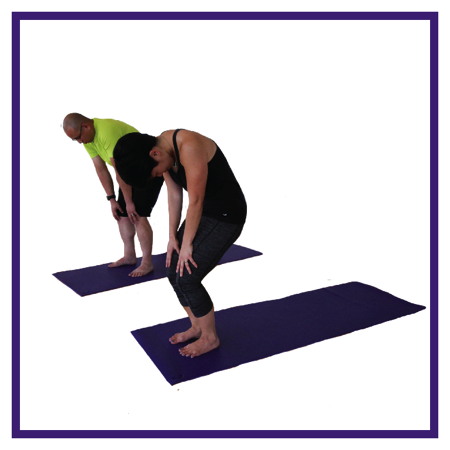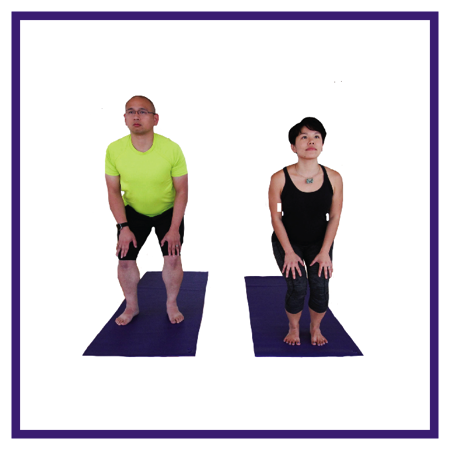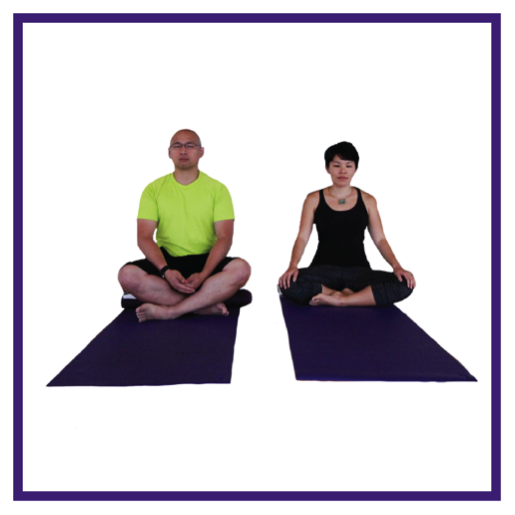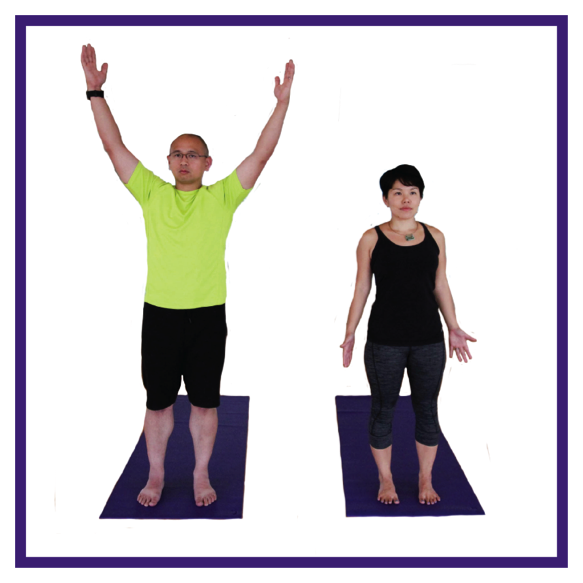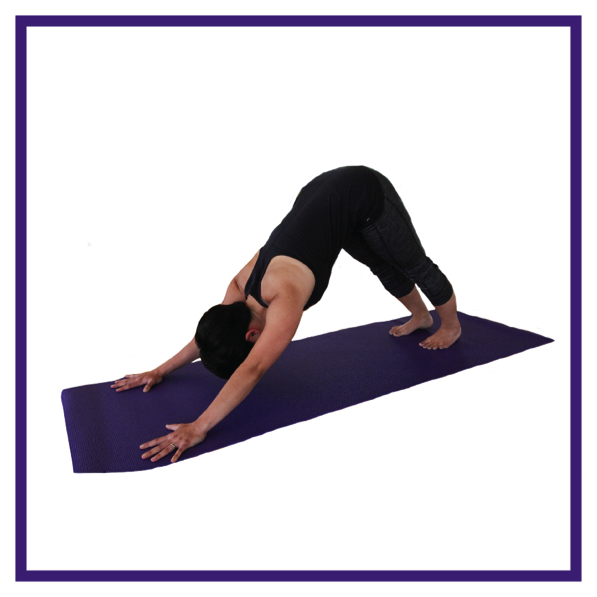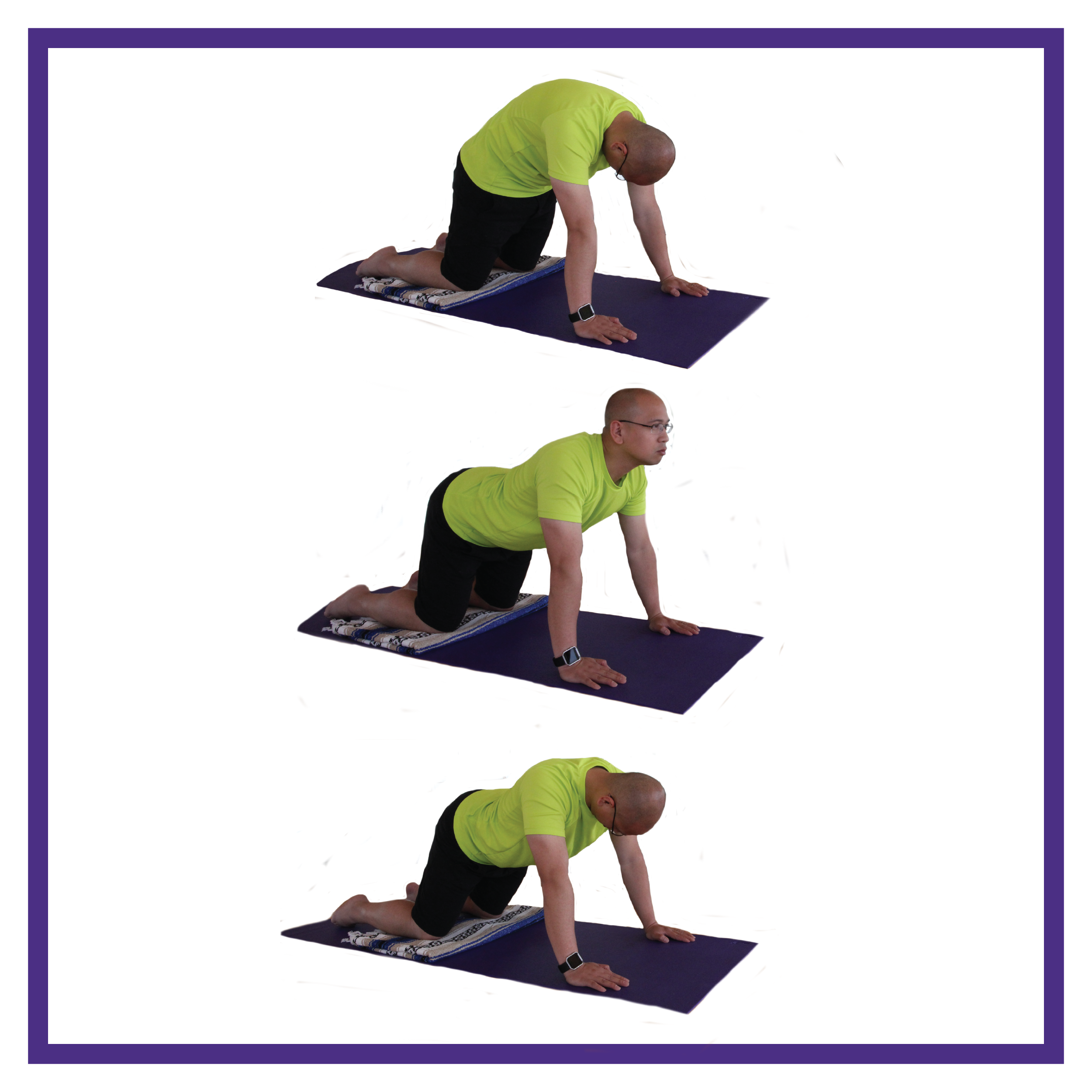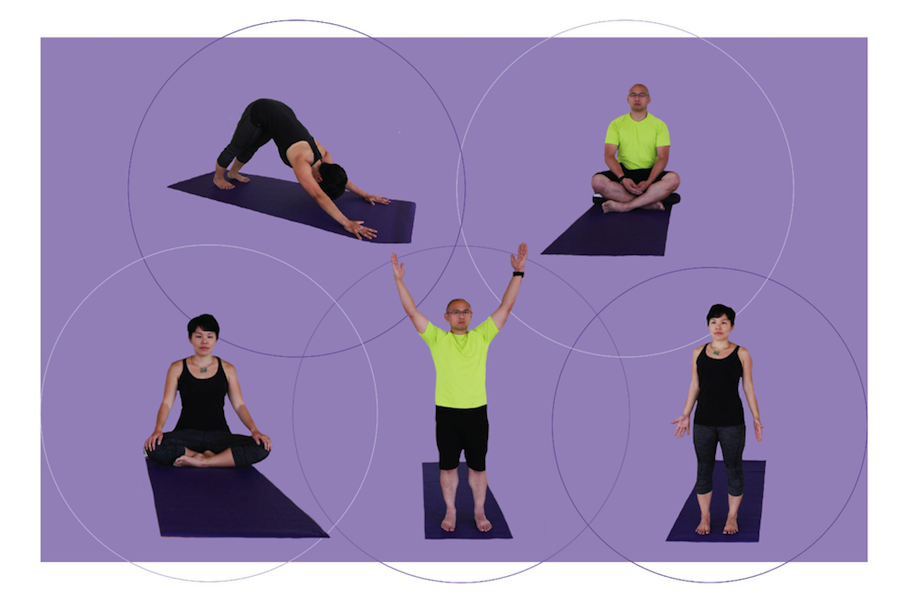
Yoga Month: Chakras Foundation and Fluidity
Welcome to Week One of Yoga Month at the University of Washington, where over 1500 UW faculty, staff, and students have committed to this experience. The main component of this year’s Yoga Month is the focus on the seven chakras. Participants will be challenged to practice each week both on and off the mat and can do so through the partnership of UW Recreation and Leela Yoga Studio in hosting many yoga classes on all campuses.
Yoga is a movement practice that has many physical and mental health benefits including reduced low back pain, increased levels of particular neurotransmitters, and greater resilience to stress. While all the science behind yoga’s benefits is valuable, in general, most people come back to their practice because they simply feel better with yoga in their lives.
This movement experience, which often begins as a physical exploration, also has the potential to evolve into a living daily practice. Themes like reacting less and responding more, building awareness, employing compassion, suiting up and showing up, cultivating empowerment, courage and gratitude are all explored on the mat, but also have a potent impact on our lives off the mat.
Yoga as a tradition has many roadmaps which offer suggestions for inquiry in the hope of exploring some of these basic human themes. The key to any of these experiments is to take inventory of what is working and what isn’t, or what actions we are choosing that are life-enhancing and which are life-detracting. Notice that this is not a moral endeavor of good or bad, right or wrong; instead we are invited to collect data, notice patterns, and run experiments which hopefully create more desirable (life-enhancing) outcomes. If they don’t, no big deal; we run a different experiment, learn from the process, and see what happens.
What’s a chakra?
The term chakra is derived from the Sanskrit word meaning wheel or circle and refers to seven energy centers, which also have physical correlations in the body. These markers provide us with a roadmap to contemplate our ability to access key life qualities like stability, sensuality, personal power, love, communication, and intuition as well as each quality’s interconnected nature.
While it is of benefit to be in touch with all of these various facets, there are particular times when we might want to focus more on one versus another. For example, if you are moving departments or housing, it could benefit you to explore rituals for stability, foundation, and safety. If you are just out of a relationship and feel like you’ve lost your sense of self, the practices might lean towards personal power. If you feel like your whole life is solely being lead from your head, your exploration might reside in reclaiming your intuition.
It is important to note that although these centers are represented individually, in reality they are tethered to one another and each one supports the other. In addition, while there is benefit to exploring the chakras in a systematic sequential fashion, once you are familiar with their specific qualities it is easier (and encouraged) to focus on the one that is most out of balance here and now.
To recalibrate these areas of our lives, we can utilize small practices that include movements, sounds, colors, journaling, and even foods that correlate and bolster each specific energy center.
How to practice
On the movement front, when you are exploring the particular poses associated with each center, it is important that your body (especially your spine) is warmed up. Begin each session with a standing exploration of the six movements of the spine (pictured) and do three sets of each. Standing cat (exhale) and cow (inhale) for spinal flexion and extension, standing side stretches (inhale center, exhale side) for lateral opening, and standing twists (inhale center, exhale twist) to connect the front, back and sides of your body.
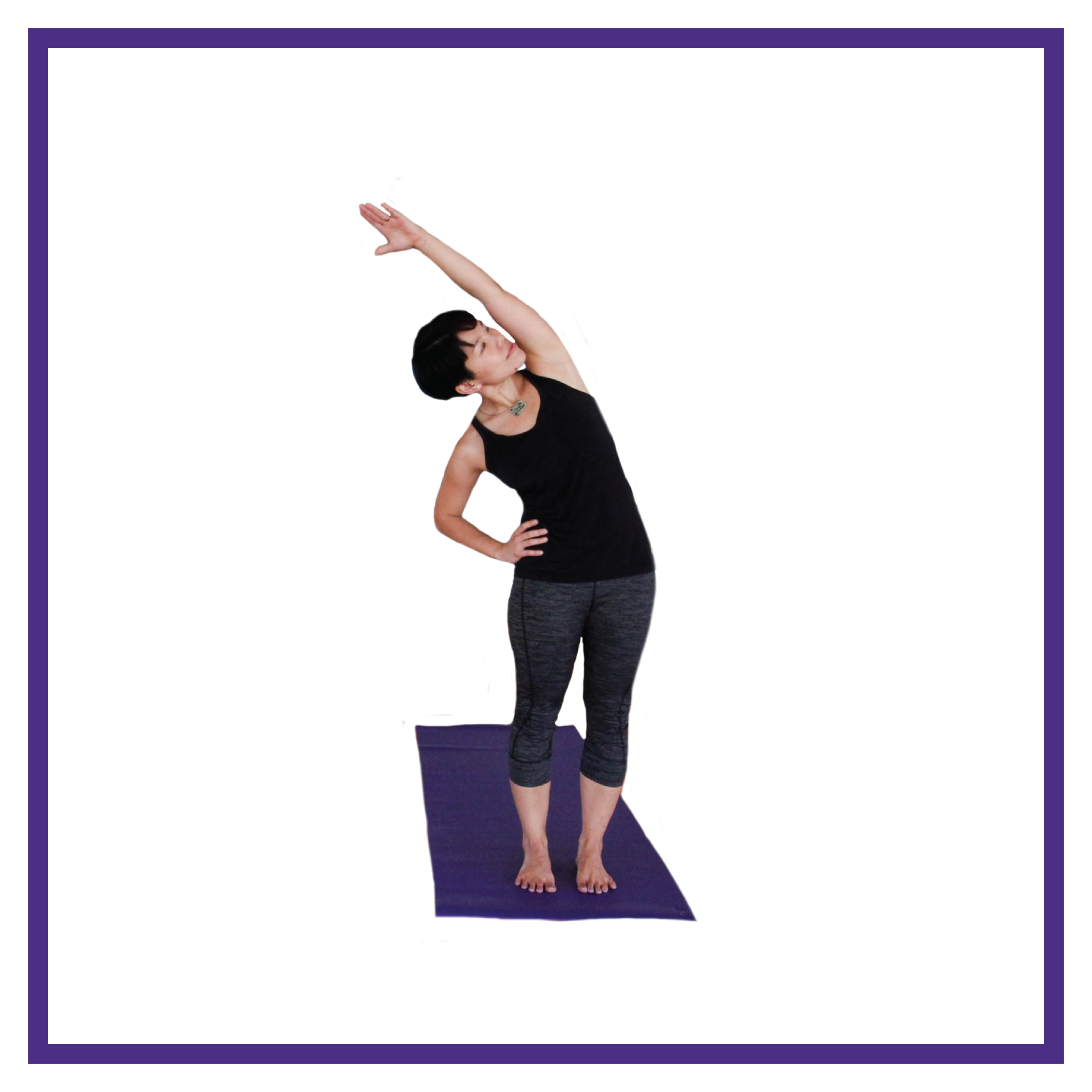
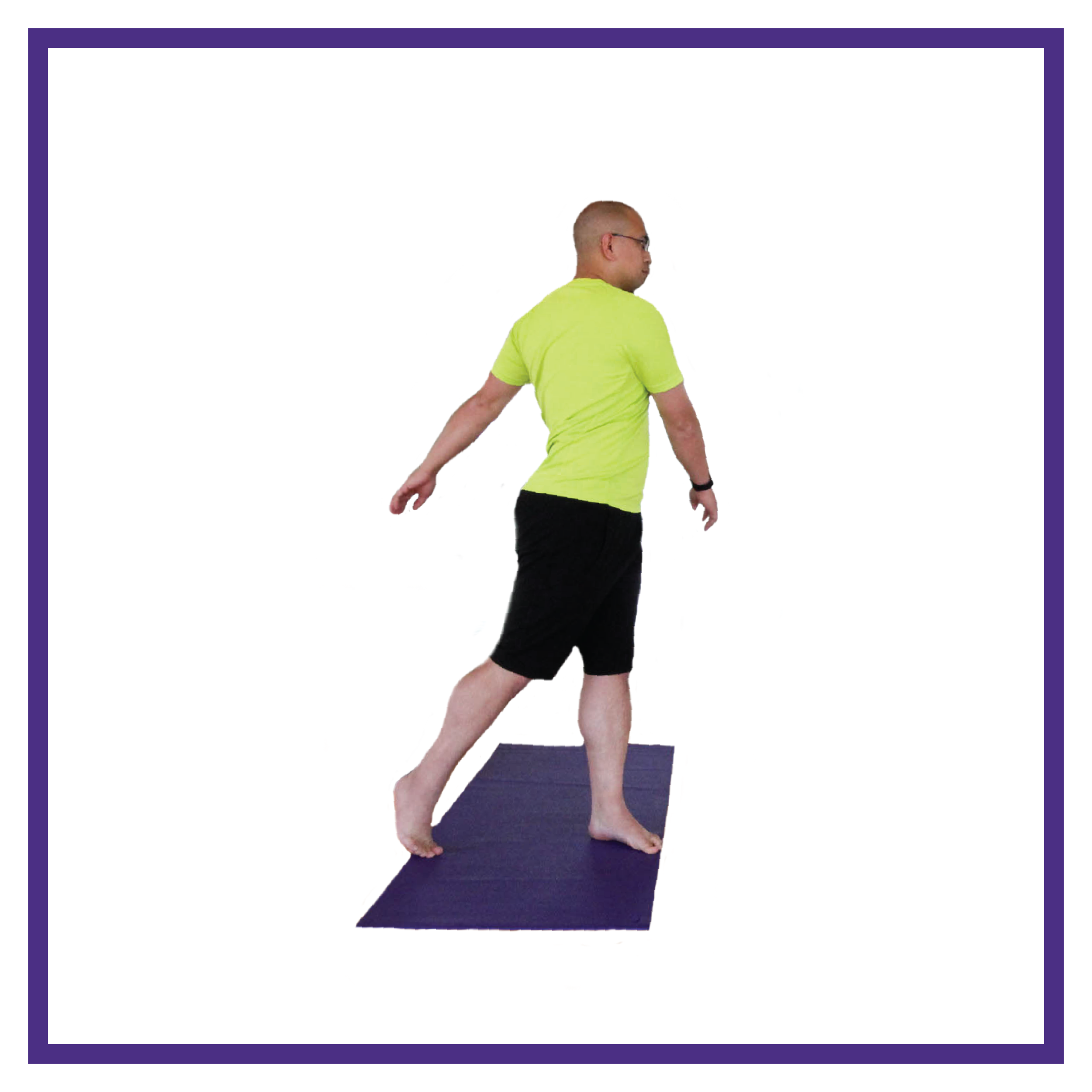
When exploring postures, focus either on the poses presented each week or combine them with those from previous weeks. Another way to work with the postures is to create your own sequence based on poses that resonated and on what you want to cultivate.
For example, if, during Week Two, you feel like the focus of grounding (covered in Week One) and empowerment (covered in Week Two) is what would best serve, run through the poses associated with both of these chakras. Take time with the poses, explore them through small movements and remember to focus on your breath and how it feels as you sustain a pose. When playing with a pose, you can always come in and out a few times coordinating movement with breath before pausing to sustain the posture a little longer (8-12 slow deep breaths).
Feel free to use whatever yoga supplies you have handy. At minimum, have a medium sized blanket, a sturdy pillow and a small wash cloth (to cover your eyes in relaxation) every time you practice.
Always complete your exploration with at least five minutes (but longer works even better with eight to ten minutes) of corpse pose to integrate your experience. You can put on a gentle timer to let go of the task of tracking time. In this final posture, lay on the ground. If your lower back is uncomfortable, place a rolled blanket (like a tube) or your pillow (if it is long) under your knees. If that still doesn’t alleviate low back discomfort, bend your knees (if it works in your legs let one knee rest to the side of the other, knocked knees).
Ensure your limbs feel spacious from your side body. Theoretically, open palms help the shoulders relax, but check-in with your own physical structure. Cover your eyes. Allow your breath to be in the background and, unguided, rest. Once your timer rings, take a few moments to reawaken, move fingers, toes, hug your knees in and roll over to one side in a fetal pose. Pause for a moment before pressing back up to sit. In this seat reflect on how you feel post exploration. What has shifted? Gradually open your eyes and return to your day.
Foundation
The first chakra resides at the base of the spine and is all about physical stability, safety, grounding, and foundation. It is related to primal preservation, our survival instinct, ability to remain centered, an experience of home, and the health of the physical body.
This center reminds us that if our basic needs are not being met (shelter, food, water, emotional safety, body care, etc.) it is much harder to move into other parts of our lives and thrive. This area of stability correlates to the element of earth, is represented by the color red, and relates to navigating fears that show up on our path.
When this wheel is out of balance, one might experience feelings of spaciness, aloofness, anxiousness, panick, an inability to take clear action, and an overall disconnection from the body. Physiologically there might be challenges such as arthritis, osteoporosis, allergies, autoimmunity, and frequent illness due to a low functioning immune system.
To cultivate more root stability, explore:
- Postures:
- Cross-legged seat: if your low back rounds or knees are higher than hip line, sit up on a cushion or folded blanket to create more space in the lumbar spine.

- Mountain: if shoulders feel tight with arms to the sky, take the arms to a wider V or bend your elbows for cactus/goal post arms.

- Down Dog: if hamstrings are tight, it will cause the low back to round, bend your knees generously (for the whole pose) and press your sitting bones towards the sky.

These postures focus on grounding and stability. The sitting bones and wide base anchored in the seat, the four corners of the feet in mountain (and the marvel of the small surface area of each foot and what it supports above), and the hands and feet rooting towards the ground in down dog.
- Foods:
- Root vegetables (carrots, parsnips, beets, radishes, yams/sweet potatoes, purple potatoes, Jerusalem artichokes, squashes)
- Ginger and turmeric roots
- Protein sustaining foods like eggs, fish, grass-fed meat, fermented soy (tempeh), etc.
- Additional practices:
- Focused breath with longer exhale (6-10 counts)
- A barefoot walk
- Gardening
- Hiking, slow and steady surrounded by rooted trees
- Journal prompt: What are three simple ways I can cultivate more stability and consistent structure in my daily life?
Fluidity
The second chakra resides in the sacrum and is all about our emotional experience, sensuality, raw feelings, fluidity, and sexuality. It is related to our ability to go with the flow, stay adaptable, and not take life too seriously all of the time. While physical intimacy is a part of this exploration, it is important to note there are many other areas in life which bring forth pleasure and sensuality.
This center reminds us that if we become overly stagnant, fearful of feeling, numb, or rigid, the nectar of life begins to dry up and we are left with a very repetitive and bland daily experience. This area of fluidity correlates to the element of water, is represented by the color orange, and relates to navigating guilt that shows up in our life.
When this wheel is out of balance there might be an experience of emotional disconnect, fear of vulnerability, rigidity in thought, guilt, or an inability to adapt to change. Physiologically there might be challenges with the bladder, kidneys, reproductive organs, large intestines, constipation, as well as hip, pelvic, and low back pain.
To cultivate more sacral fluidity, explore:
- Postures: All poses: Keep these postures moving with your breath and remember to move at your own speed honoring the specific range of motion available in your unique body.
- Cat/cow flexion/extension and circles (focus on the fluid motion of your spinal disks moving back and forth and then shift your attention to the circular rotation of your hips

- Half-circle: Once you are set up in your pose, start to move with your breath, circle your top arm 360 degrees as if you were swirling a lasso overhead. Based on range of motion also add gentle circular motions in your hips. At one point reverse the direction on both your arm and hips.
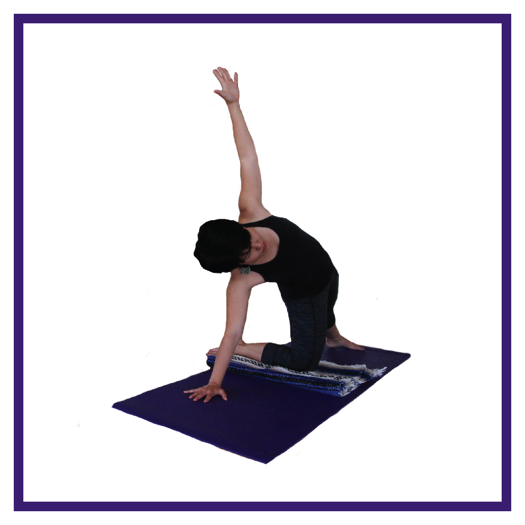
- Wide squat (Goddess/Horse) in motion: Move with your breath here as well. Inhale to sweep the arms skyward legs straighten, exhale arms float down as you bend your knees and squat to your own degree.
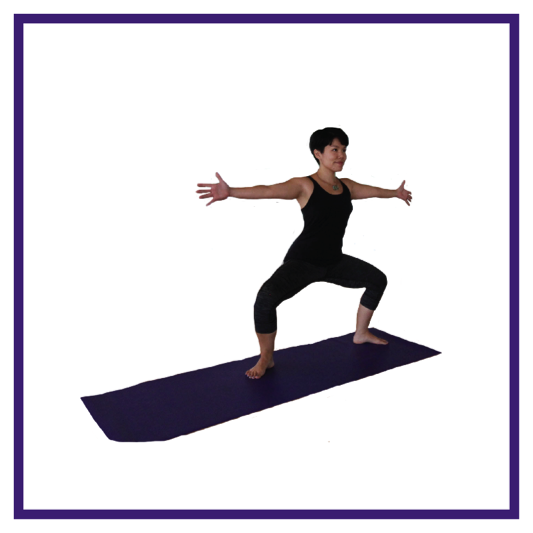
These postures focus on fluidity and conscious movement. The spinal disks and hips in cat/cow, the hips and top arm in motion in half-circle, and the breath coordinated with movement in the moving wide squat.
- Foods:
- Water
- Sweet and watery fruit (mangos, strawberries, figs, passion fruit, peaches, apricots, papaya, watermelon, and coconut)
- Cinnamon, vanilla, and raw honey
- Additional practices:
- Put your favorite music on and dance (or take a Zumba or dance class)
- Bathe or swim
- Full body massage
- Time for self/partner pleasure
- Journal prompt: What are one to three areas of my life that guilt takes the place of potential sweetness? What would change if that guilt wasn’t present?
This week, Yoga Month participants are encouraged to follow the plan below from Wednesday through Sunday.
Tuesday Eve: Buy chakra related foods at store. Journal on first chakra journal prompt.
Wednesday AM: First chakra postures (5 min); eat grounding breakfast.
Wednesday Eve: Barefoot walk (5 min)
Thursday AM: Focused breath practice (5 min)
Thursday PM: Journal on second chakra journal prompt
Friday AM: Second chakra postures (5 min)
Friday Snack: Sweet juicy fruits
Saturday PM: Go out dancing
Sunday AM: First and second chakra postures (10 min)
Sunday PM: Bath followed by journaling on learnings from this week’s explorations (35min)
To further your journey, join us for the Mindfulness & Courageous Self-Care: A Nurturing Retreat. You can register here. If you haven’t registered for yoga month, it’s not too late. Register Now!
Special thanks to yoga pose models May Lim (Department of Electrical Engineering) and Nate Panelo (Office of Minority Affairs & Diversity).
Namaste.
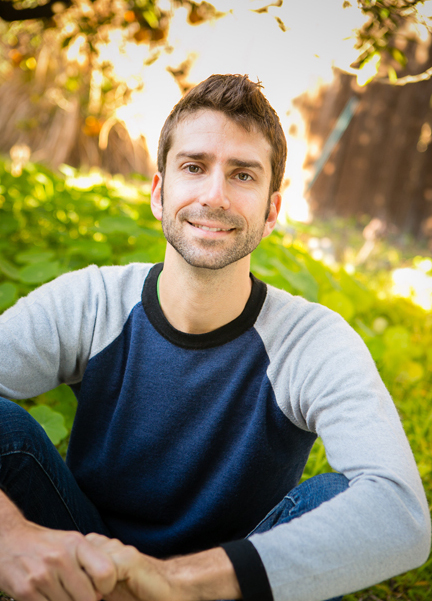 Danny Arguetty, M.A., is the mindfulness program manager at the University of Washington, a yoga teacher (and teacher trainer), nutrition/life coach, and a lover of the environment. He is the author of Nourishing the Teacher and The 6 Qualities of Consciousness. Passionate about helping people flourish through mindfulness, wellness, and personal self-development, he has over a decade’s worth of experience in group facilitation, one-on-one coaching, and experiential teaching.
Danny Arguetty, M.A., is the mindfulness program manager at the University of Washington, a yoga teacher (and teacher trainer), nutrition/life coach, and a lover of the environment. He is the author of Nourishing the Teacher and The 6 Qualities of Consciousness. Passionate about helping people flourish through mindfulness, wellness, and personal self-development, he has over a decade’s worth of experience in group facilitation, one-on-one coaching, and experiential teaching.
Danny has guided workshops throughout the United States, led basic and advanced yoga trainings in the U.S. and India, and spoken at Facebook, Olson Kundig, and Gravity Payments (all in Seattle). He served as adjunct faculty at Williams College, leads a quarterly course on Intro to Mindfulness at UW, and is a faculty member at Kripalu Center for Yoga & Health.
